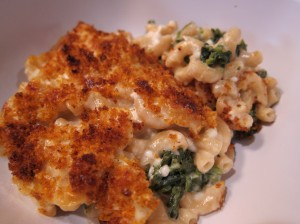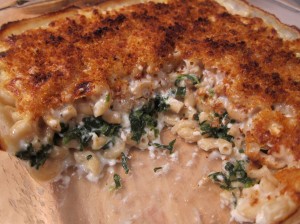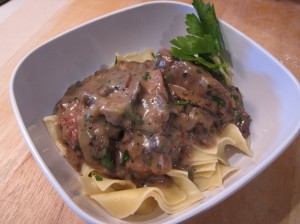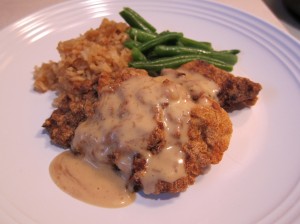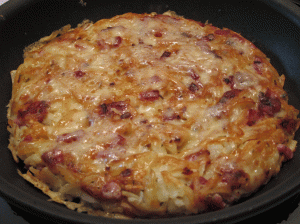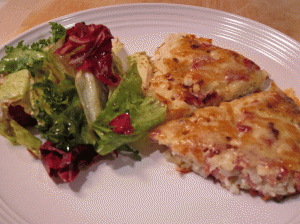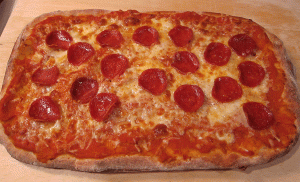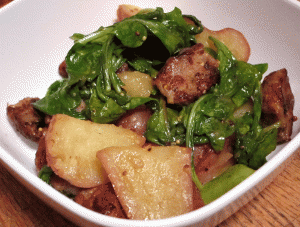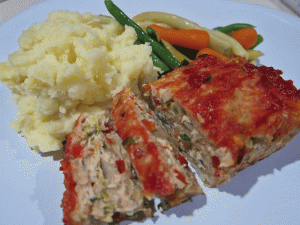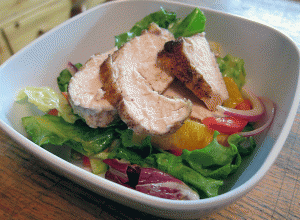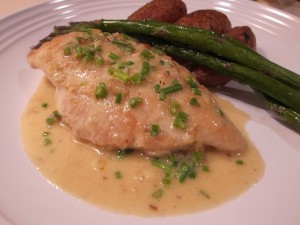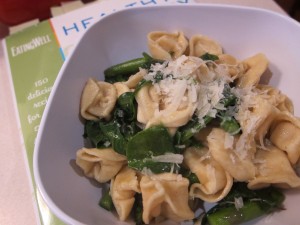Week 4, day 3 of My Eating Well Challenge.
EatingWell’s Comfort Foods Made Healthy cookbook has redeemed itself with this version of mac and cheese. It may have simply been the luck of the draw that the two other recipes I chose from this book were lackluster. I was beginning to feel that EatingWell’s definition of comfort food meant gluey sauces, but this recipe is a winner.
I was very concerned about this recipe, as I dislike cottage cheese, but most of that has to do with its texture. It is used in this recipe to lighten the fat, and does not make the sauce curdy in the least. Even so it should be noted that this is not a low fat recipe. However, by using whole wheat pasta and adding spinach, it is a high-fiber recipe, and I found that a smaller portion is very filling. I inadvertently used hot paprika in the breadcrumb mixture; a happy accident as it wasn’t spicy at all, but gave the dish an added punch.
The sauce is wonderfully cheesy, and the spinach makes the flavor reminiscent of Ina Garten’s incredibly luscious spinach gratin. This is a delicious baked mac and cheese.
Baked Mac & Cheese
From EatingWell’s Comfort Foods Made Healthy
View the recipe and nutritional information at EatingWell.com
3 tablespoons plain dry breadcrumbs, (see Tip)
1 teaspoon extra-virgin olive oil
1/4 teaspoon paprika
1 16-ounce or 10-ounce package frozen spinach, thawed
1 3/4 cups low-fat milk, divided
3 tablespoons all-purpose flour
2 cups shredded extra-sharp Cheddar cheese
1 cup low-fat cottage cheese
1/8 teaspoon ground nutmeg
1/4 teaspoon salt
Freshly ground pepper, to taste
8 ounces (2 cups) whole-wheat elbow macaroni, or penne
1. Put a large pot of water on to boil. Preheat oven to 450°F. Coat an 8-inch-square (2-quart) baking dish with cooking spray.
2/ Mix breadcrumbs, oil and paprika in a small bowl. Place spinach in a fine-mesh strainer and press out excess moisture.
3. Heat 1 1/2 cups milk in a large heavy saucepan over medium-high heat until steaming. Whisk remaining 1/4 cup milk and flour in a small bowl until smooth; add to the hot milk and cook, whisking constantly, until the sauce simmers and thickens, 2 to 3 minutes. Remove from heat and stir in Cheddar until melted. Stir in cottage cheese, nutmeg, salt and pepper.
4. Cook pasta for 4 minutes, or until not quite tender. (It will continue to cook during baking.) Drain and add to the cheese sauce; mix well. Spread half the pasta mixture in the prepared baking dish. Spoon the spinach on top. Top with the remaining pasta; sprinkle with the breadcrumb mixture.
5. Bake the casserole until bubbly and golden, 25 to 30 minutes.
Tip: To make fresh breadcrumbs, trim crusts from whole-wheat bread. Tear bread into pieces and process in a food processor until coarse crumbs form. One slice of bread makes about 1/2 cup fresh crumbs. For dry breadcrumbs, spread the fresh crumbs on a baking sheet and bake at 250°F until crispy, about 15 minutes. One slice of fresh bread makes about 1/3 cup dry crumbs. Or use prepared coarse dry breadcrumbs. We like Ian’s brand labeled “Panko breadcrumbs.” Find them in the natural-foods section of large supermarkets.
